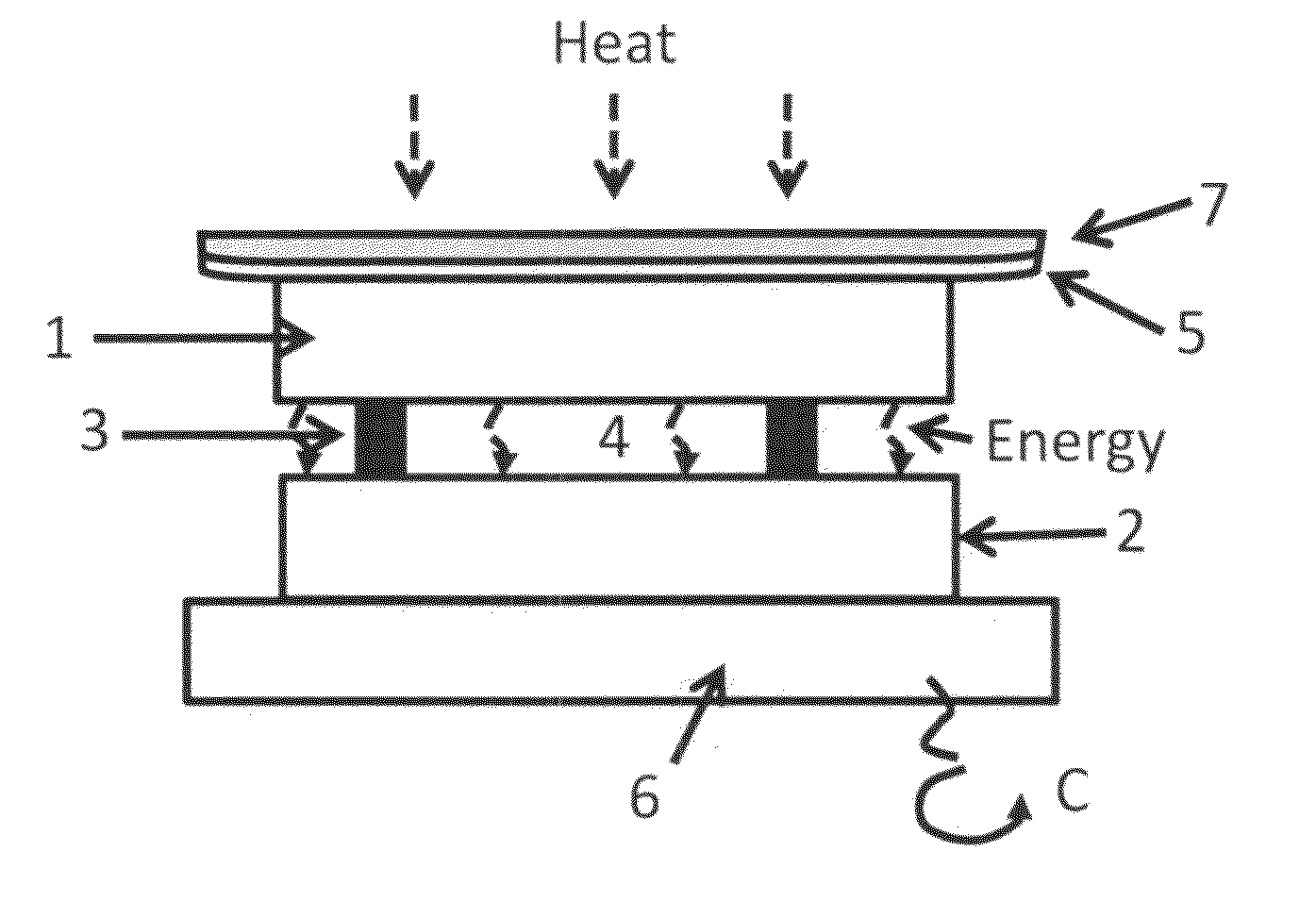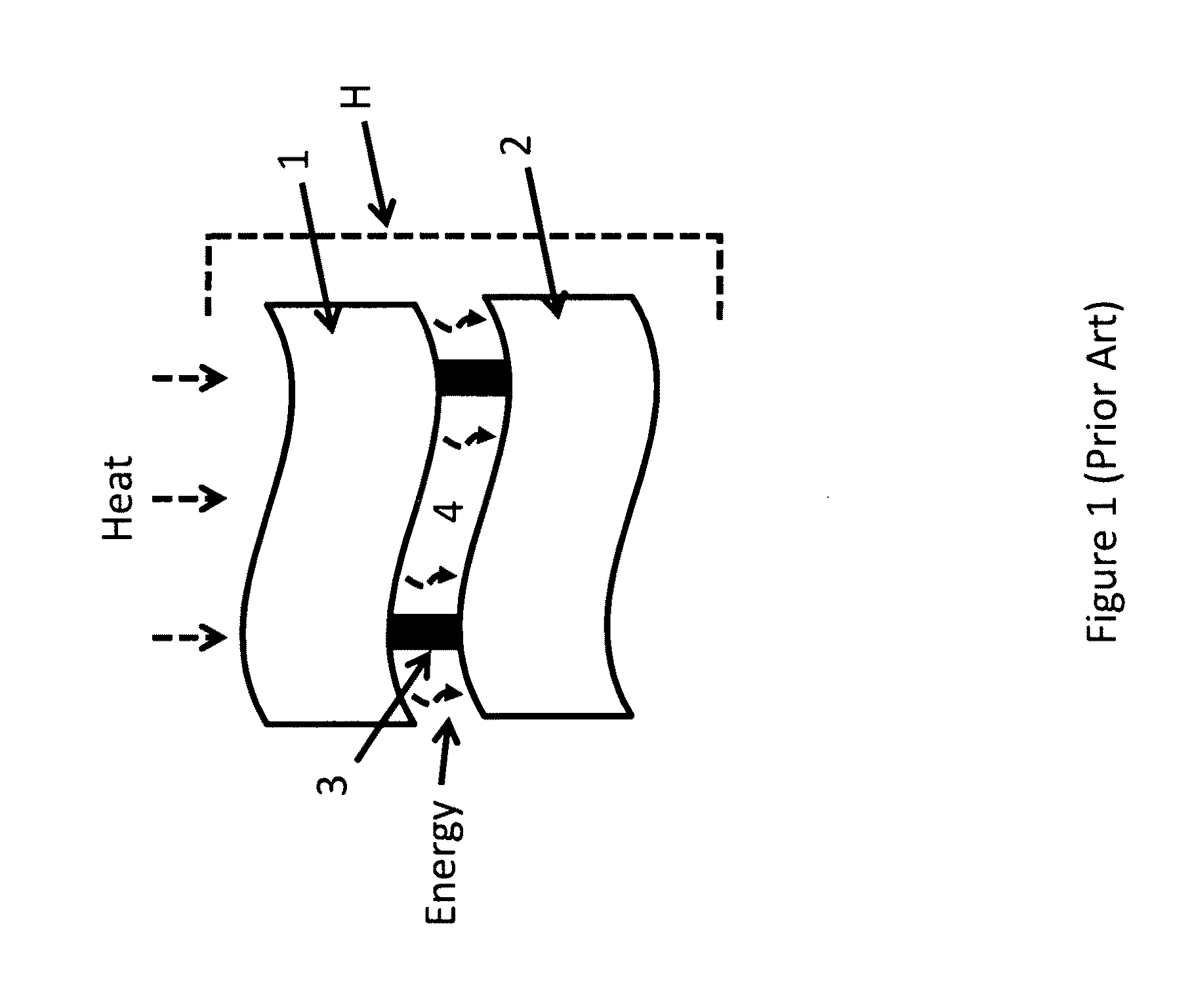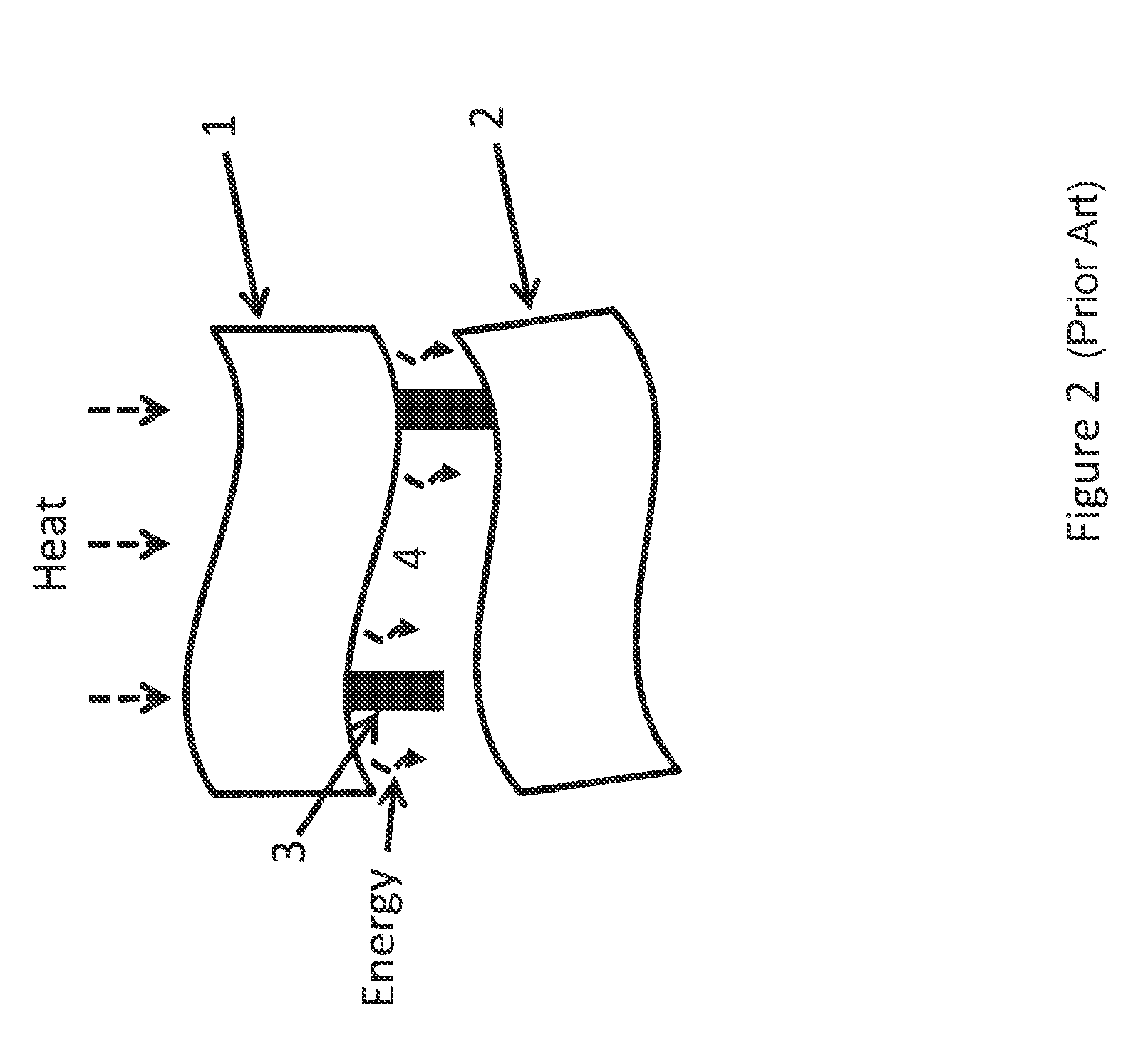Method and structure, using flexible membrane surfaces, for setting and/or maintaining a uniform micron/sub-micron gap separation between juxtaposed photosensitive and heat-supplying surfaces of photovoltaic chips and the like for the generation of electrical power
a photovoltaic chip and photosensitive surface technology, applied in the field of nearfield devices, can solve the problems of bow and surface irregularities of each chip, the difficulty of achieving gap uniformity, and the difficulty of accommodating the irregularities of the chip
- Summary
- Abstract
- Description
- Claims
- Application Information
AI Technical Summary
Benefits of technology
Problems solved by technology
Method used
Image
Examples
Embodiment Construction
[0023]A general fragmentary schematic of a near-field system is presented in in FIG. 1, comprised of a thermal emitter 1, a radiation receiver 2, one or more spacers 3, and a sub-micron gap 4, preferably in an evacuated housing H. The spacers define the size of the gap between the emitter and receiver and may be fabricated on either or both the emitter or receiver. The size of the gap is preferably less than one micron—for example, less than 100 nanometers. Incoming heat increases the temperature of the emitter 1 and causes it to emit energy. In MTPV, this energy takes the form of infrared radiation according to Planck's Law and is generally in the infrared (1-2 micrometer wavelength) regime. In CC, this energy takes the form of electrical fields active over very small distances (4 and is absorbed by the receiver 2. In MTPV, the receiver 2 is a photovoltaic cell. In CC, the receiver 2 may be one or more two-level quantum dots separated from a reservoir by a tunneling barrier and con...
PUM
 Login to View More
Login to View More Abstract
Description
Claims
Application Information
 Login to View More
Login to View More - R&D
- Intellectual Property
- Life Sciences
- Materials
- Tech Scout
- Unparalleled Data Quality
- Higher Quality Content
- 60% Fewer Hallucinations
Browse by: Latest US Patents, China's latest patents, Technical Efficacy Thesaurus, Application Domain, Technology Topic, Popular Technical Reports.
© 2025 PatSnap. All rights reserved.Legal|Privacy policy|Modern Slavery Act Transparency Statement|Sitemap|About US| Contact US: help@patsnap.com



